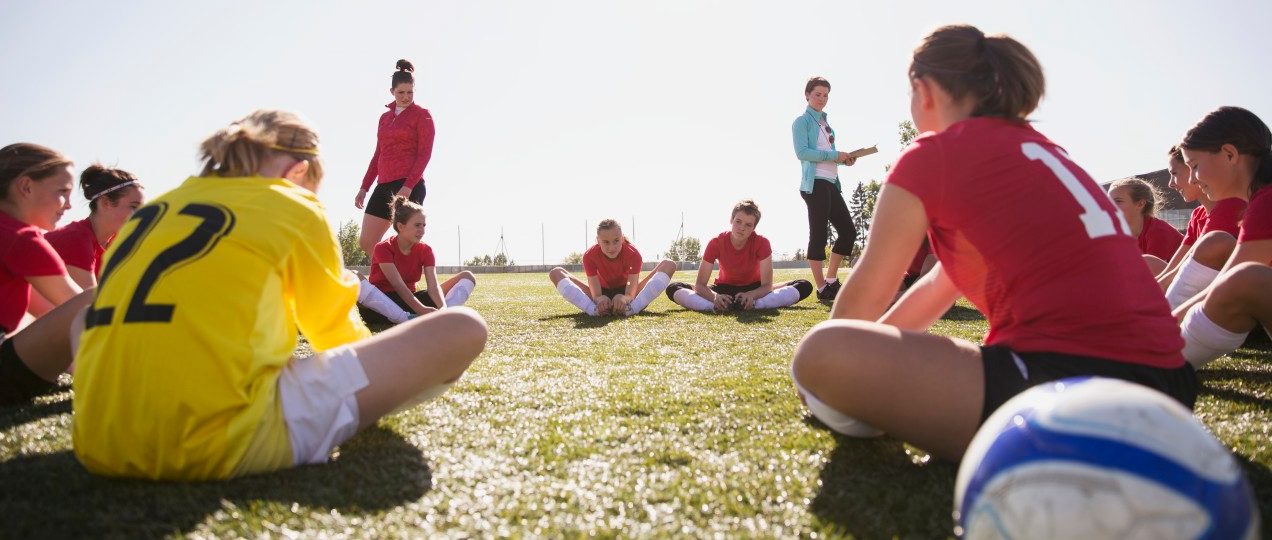Does Your Child's School Have a Sports Safety Program?

As a concerned parent, you should find out if your child’s school invests in safety in sports programs. The school should follow some basic guidelines.
When Laura Friend’s 12-year-old daughter Sarah went into cardiac arrest during a junior lifeguarding class, no one tried CPR or used the automated external defibrillator (AED) on the premises, which could have reset her heart.
In 2015 alone, 50 high schoolers died while playing a sport; thousands of others live with problems related to injuries that might have been prevented with better rules. The risks aren’t always obvious: Friends learned that Sarah had an enlarged heart only after she died.
YOU MIGHT ALSO LIKE: Chronic Traumatic Encephalopathy Is Real and Dangerous
There are no nationwide safety guidelines for high school sports. Setting standards is the job of the states and schools, and most of them haven’t done so. For example, many schools don’t have an AED readily at hand.
“They should be like fire extinguishers,” says Jonathan Drezner, MD, a sports medicine expert at the University of Washington.
After cardiac arrest, the most common causes of high school sports-related deaths are head and neck injuries and heat stroke. They could be prevented if schools followed some basics:
1. Limit practice time to three hours a day.
2. Limit playing in extreme heat or humidity. Coaches should monitor the climate and know when to postpone or suspend activity.
3. Keep a cooling tub available on hot or humid days.
4. After a concussion, once students are cleared to compete again, they should do so in stages over at least two and a half days.
5. Have an athletic trainer or sports doctor at all practices and games.
6. Keep AEDs available, not locked away in closets.
7. Coaches should know CPR and how to use the AED and the signs of a possible concussion.
8. Have a clear emergency plan for how to help an injured player.
9. Phase in conditioning: The first seven to 10 days of any new cycle is a transition.
10. Don’t use exercise and conditioning as punishment.
Students need only two to three hours in training to protect each other. When Tommy Malon was 17, he landed hard while playing lacrosse, and a teammate refused to help him up. The athletic trainer who arrived called for an ambulance. Because Tommy had fractured a vertebra in his neck and torn an artery to his brain, he could have died or become paralyzed if the teammate had pulled him up. His grateful mother, Beth Mallon, created a program for students called Athletes Saving Athletes, taught by trainers.
“High schools spend tons of money on referees, but almost nothing on safety,” she said. “I’d like to see every high school in the country adopt a sports safety curriculum. You never think a catastrophic injury will happen to your kid, but if it does, you’d be so grateful that someone is there who knows what to do.”
Parents might urge their children’s school officials to note its recommendations. If money is tight, consider fundraisers to pay for the AED or a trained medic at every practice.
Also make sure your kids know to call for trained help when they’re in trouble or see another player in danger, learn hands-only CPR, and know the location of the school’s AED. Every student athlete needs to recognize the possibility of concussion, head and neck injury, heat illness, sudden cardiac arrest, or complications from diabetes and asthma.
The National Athletic Trainers’ Association has issued statements on:
- Managing ankle sprains. Before you go back in the game, be able to hop on one foot. Tape your ankle or wear a brace if this is a second injury.
- Concussion. Most athletes won’t be able to compete again for a week.
- Supplements. Change your diet first, and check for certifications of any product.
- Preseason heat conditioning. Build up over 14 days and rest completely every sixth day. Rest-days don’t count towards your 14.
YOU MIGHT ALSO LIKE: What You Should Know about Cheerleading Safety
Updated:
March 31, 2023
Reviewed By:
Janet O’Dell, RN